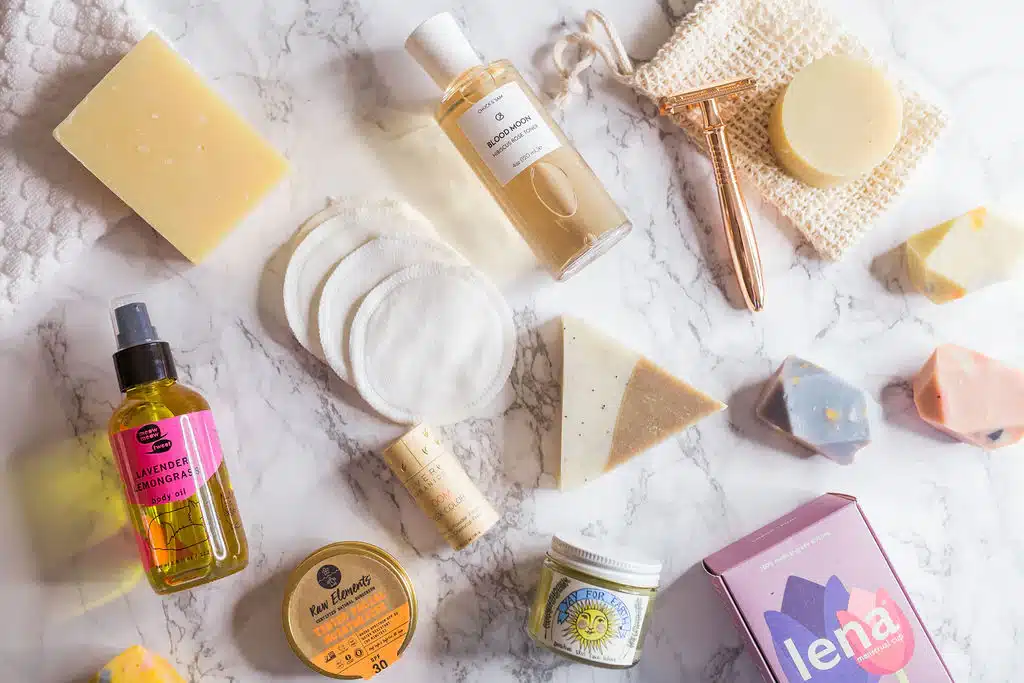
Zero-Waste Beauty 2025: 11 Powerful Swaps for a Gorgeous, Low-Trash Routine
Zero-Waste Beauty isn’t about having the perfect “trash jar”—it’s about making everyday swaps that reduce waste, save money, and keep routines chic and high-performing. Whether you’re starting out or looking to upgrade your low-waste regimen, these trends and smart swaps are leading the movement for 2025.
Explore more tips and step-by-step guides in our Zero-Waste Beauty hub, designed for eco-chic routines at every level.
What Makes Zero-Waste Beauty Different in 2025
Zero-waste beauty now means thinking about the whole lifecycle of your products: buy less but better, reuse containers, choose waterless and concentrated formats, and always check end-of-life guidelines. The United Nations Environment Programme highlights packaging as a major driver of single-use waste. Moving towards refill systems, biodegradable designs, and reusable beauty tools addresses this global issue at its root.
For more insights on the real-world effects of beauty packaging, check out our deep-dive on Environmental Impact of Beauty Products.
11 Powerful Zero-Waste Swaps to Try Now
- Refillable moisturizer jars:
Keep a beautiful outer shell and swap only the inner pod—classic zero-waste win. See featured options in Refillable Beauty Products. - Serum recharges:
Reload the same glass dropper with new vials, often using recyclable aluminum caps. - Waterless cleanser bars:
Solid bars make packaging light, and formulas travel- and storage-friendly. - Powdered vitamin C & exfoliants:
No water means less need for preservatives and more recyclable glass. - Refillable deodorant cores (metal shells):
Sturdy and stylish, designed for reuse and longevity. - Shampoo & conditioner bars in tins:
Bars replace bottles—store dry, pair with reusable soap bags for best results. - Hand soap tablets + glass pump:
Just add water at home—much less packaging, easy to refill. - Refillable lipstick bullets:
Save the case, swap in new color refills, and cut daily plastic. - Magnetic palettes for powders:
Swap pans instead of tossing entire compacts—great for blush, bronzer, and eyeshadow. - Concentrated body wash pouches:
Use a small amount with a foaming pump; buy in bulk for fewer shipments. - Take-back or returnable programs:
Send empties for professional cleaning and reuse—scalable, brand-backed waste reduction.
For packaging tips while you shop, visit Green Packaging for breakdowns and trade-off guides.
How to Build a Low-Waste Routine (Step-by-Step)
Step 1 — Audit Your Fastest Empties:
Begin with what you use up most often—cleanser, moisturizer, shampoo, deodorant—for the greatest early impact.
Step 2 — Choose an Ecosystem:
Brands with a suite of refill options let you order multiple pods together for convenience and a smaller shipping footprint.
Step 3 — Start with One Zone:
Focus on face first, then expand to hair, body, and makeup for a phased, affordable transition.
Step 4 — Store + Sanitize:
Let solid bars dry, keep containers clean, and follow all brand hygiene instructions to maintain peak performance.
Step 5 — Close the Loop:
Use take-back programs if available or recycle every component correctly. For habit stacking and more how-tos, see Sustainable Beauty Practices.
Step 6 — Rebottle Less, Enjoy More:
Keep a curated rotation of glass, aluminum, or minimalist packaging for a decluttered, premium-feeling routine.
Recycling Labels Decoded (and Why Pumps Are Tricky)
- Multi-component packs (jar, cap, pump, liner) usually have different recycling rules.
The How2Recycle label breaks down what to do with each part. Look for “rinse,” “empty & replace cap,” or “store drop-off.” - Pumps & droppers often mix materials or use small parts—check if pieces detach or if the brand sells replacements for everything.
- Mono-material inserts are easier for facilities to process—choose PP-only or PET-only packaging whenever possible.
- Always check the most recent recycling directions on the current packaging.
Green Packaging has up-to-date visual guides.
FAQs
Is zero-waste beauty realistic if I’m busy?
Yes! Start with two swaps, like a cleanser bar and refillable moisturizer, and build up from there. See our Zero-Waste Beauty hub for inspiration at every level.
Do refills always reduce impact?
The savings grow each reuse cycle, especially with mono-materials and right-sized formats. Take-back and return programs are extra effective at scale.
Is glass always better than plastic?
Not necessarily. Consider reuse frequency and shipping emissions; pick what you’ll actually return, refill, or recycle. Our Green Packaging guides explain trade-offs for each option.
Where can I learn more about the environmental impact?
UNEP resources and our own Environmental Impact of Beauty Products explain why better design and reuse matter most.
